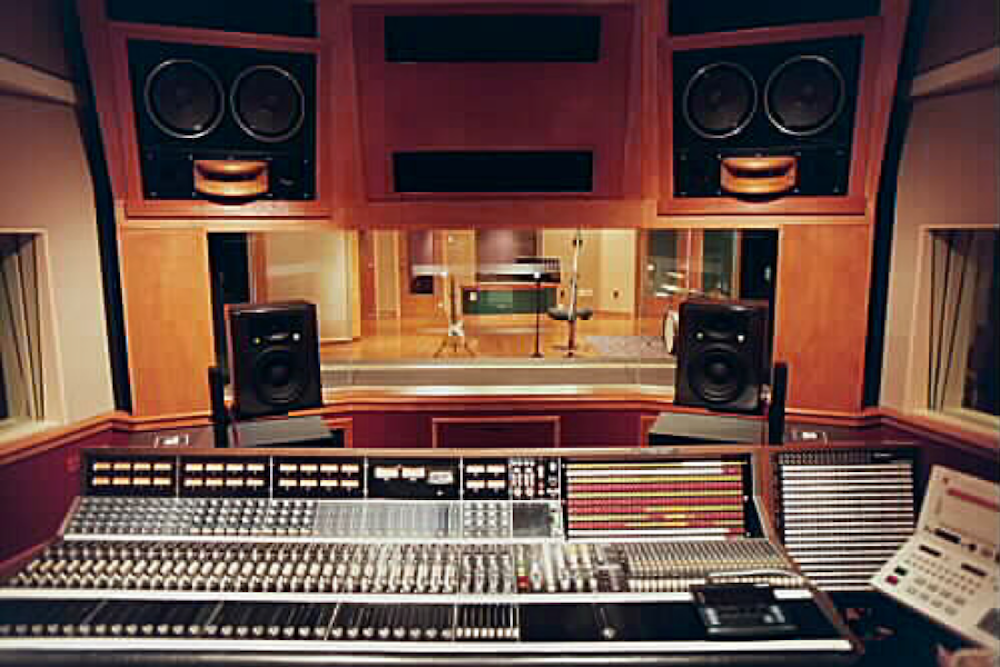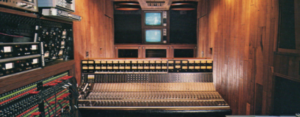This is the fifth installment in David Hewitt’s guest blog series chronicling his legendary career working with some of the biggest names in music. Today, David recalls his experiences with the Philadelphia Sound. If you missed his last post, you can read it here.
The Many Sounds of Philadelphia
For those of you who attended the 2017 New York AES Show last fall, I hope you recovered quicker than I did! Miles of aisles and so many old friends to see, not to mention a reunion of New York Record Plant Studios alumni on Saturday night. That’s a story unto itself.
Saturday, October 21, 2017, was the last day of the AES Show and as the exhibit floor was being packed up, only the white papers and special sessions were still being presented. It was one of the very last sessions I was most interested in… The Sound of Philadelphia (TSOP)!
I know some of you stayed, because the room was packed for a great seminar on that classic era of R&B and Soul from the 1960s through the 1980s… The Philly Sound; with Sigma Sound Studios founder Joe Tarsia, surrounded by some of his original engineers, Jay Mark, Dirk Devlin and Arthur Stoppe. Panel moderator Mark Rubel, co-director of the Blackbird Academy in Nashville, who is also an engineer and studio owner, was the perfect host for the AES audience.
Toby Seay of Drexel University, where the Sigma tape library has been ensconced, transferred some of the original 16-track masters to Pro Tools. Mark was able to play classic hits like the O’Jays’ “Back Stabbers” and Lou Rawls’ “You’ll Never Find Another Love Like Mine.” As they played, Joe Tarsia and his engineers talked about how those sessions were recorded and what consoles and microphones were used. Arthur Stoppe, who fortunately is a photographer as well as an engineer, provided many great period photos along with his narration of what they meant. These were very helpful in showing how they placed musicians and microphones for creative leakage, part of the “Sigma signature sound.”
Engineer Dirk Devlin told of Sigma’s microphone techniques, like using the Altec 633 “Salt Shaker” on snare and the RCA BK-5A on kick, disproving the fear that its ribbon couldn’t take the heat! Jay Mark, who had also been a radio DJ, engineered many R&B hits there and went on to work with the legendary Tom Dowd on Allman Brothers records. My Silver Remote Truck recorded many live shows with Jay and Tom for the Brothers.
The Philly Sound panel could have gone on for hours, but the time was up, and the crew was eager to strike the gear and finish a long week of AES work. I did manage to talk with the panel members briefly, but didn’t want to hold up the line of fans waiting to hear more hallowed history from the men who made it!
I had some history in Philadelphia myself, albeit as an outsider… I was an Air Force brat, originally from Montana, not exactly R&B country.
My first studio gig was at what had been Cameo Parkway studios in Philadelphia, where Joe Tarsia had once been chief engineer. After many years of classic hits with the likes of Chubby Checker and Bobby Rydell, Cameo Parkway Records folded in 1967, succumbing to the British Invasion bands and losing long-time ally Dick Clark’s American Bandstand when they moved to Los Angeles.
Joe Tarsia went on to found Sigma Sound Studios in 1968 and opened a whole new chapter of the Philadelphia Sound.
The late Bob Liftin, an innovative engineer and owner of Regent Sound Studios in New York, renovated the old Cameo Parkway studios and opened a Regent Sound branch there in 1970. Joel Fein, who had worked in those same studios for Joe Tarsia, was hired as chief engineer.
My lady friend at the time was a talented singer-songwriter, who had recorded her first record at Cameo Parkway and was now recording demos at Regent Sound. She introduced me to Joel and he kindly allowed me to become an unpaid assistant. It took me a few months, but I finally figured out how to press the record button and Liftin agreed to hire me for $50/week!
Regent was never a serious threat to Sigma, Joe Tarsia was a brilliant Engineer and had a crack team of young engineers, techs and business partners, all of whom helped create the Gamble, Huff and Bell hit-making machine. Joel Fein had known Thom Bell from the Cameo days and we occasionally got overflow work on the Stylistics records when Sigma was busy. But we did have some success; legendary gospel singers The Dixie Hummingbirds recorded there, and lead singer Ira Tucker brought in Stevie Wonder. We recorded jazz great Chico Hamilton for a film score and did the pilot for the film The Buddy Holly Story. Daryl Hall and John Oates lived around the corner and played on commercial sessions before signing with Atlantic Records and becoming superstars. I would record many of their live shows in years to come.
I could tell many stories of those crazy days and nights of D, S and R&R, but I won’t embarrass the surviving witnesses or my adult children!
Another Philadelphia icon by the name of Anthony A. Martino (Founder of the nationwide chain AAMCO Transmissions) bought out Bob Liftin’s Regent Sound Philadelphia. Among his friends was one Fred DiSipio, the infamous record promoter.
Tony was very easygoing and allowed me to rebuild the smaller Studio B, which was better suited to rock than the large Studio A room. I redesigned the old Cameo control room into a sort of Art Nouveau hippie lounge with an eight-track Regent console and Scully machines. Great fun, but it didn’t bring in much business.
Seeing little remuneration and no future as Tony Martino turned his attention to founding a new business empire, MAACO Collision Repair & Auto Painting franchises, I left to join Record Plant Studios in New York. Last report I saw, MAACO grossed $60,000,000.00 for the year. For Tony, the studio was just a temporary hobby.
When the former Cameo Parkway/Regent/Martino Studios emptied, Gamble & Huff took over the building for their offices and production studios. The large Studio A was converted into offices and Studio B was once again Joe Tarsia’s and he completely redesigned it as Sigma Sound Studio 4. Back to life for the third time, “B” recorded and mixed many more hit records.
In 2010 a deranged drunk broke into the building at 309 South Broad and set a fire that did extensive damage to the third floor offices of Gamble & Huff. They never rebuilt, and the building was demolished on April 18, 2015. A high-rise hotel and luxury condominiums will take its place.
The Sigma Sound Studios building at 212 N. 12th St. ceased operation in 2014 and was listed as a Historic Site by the City of Philadelphia on October 15, 2015.
But the Philly sounds never stopped, and two great classic Studios continue the recording legacy in Philadelphia, Elm Street Studios and Studio 4.
Studio 4 has a long history as the home of the Butcher Brothers, Phil and Joe Nicolo, founders of Ruffhouse Records. As engineers and producers, they work with such diverse artists as Phil Collins, Cypress Hill and Bon Jovi. Check philnicolo.com for an expansive tour of their careers and Studio 4, as seen below.

Elm Street Studios is owned by Rob Hyman and managed by chief engineer John O. Senior. Rob is best known as the singer-songwriter with The Hooters and Cindi Lauper, with whom he wrote the huge hit “Time After Time.”
The George Augspurger-designed studio features a vintage API 2488, two Otari MTR-90 16/24-track recorders, Pro Tools HD3 and a large collection of outboard gear and microphones … including many Audio-Technicas!

This API is similar to the one I used to record The Hooter’s Nervous Night live video in 1985 on the Record Plant Black Truck. Come to think of it, The Hooters were the opening act for Live Aid in Philadelphia. I was the contractor for all the live audio trucks, including the Black Truck.
There are so many more stories of Live Recordings in Philadelphia … I’ll save them for the next blog! See you then!
– David W Hewitt
